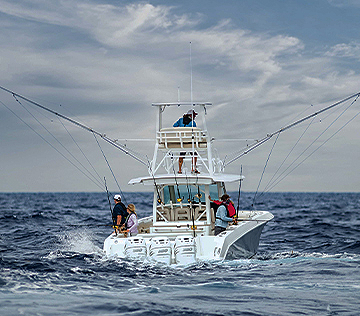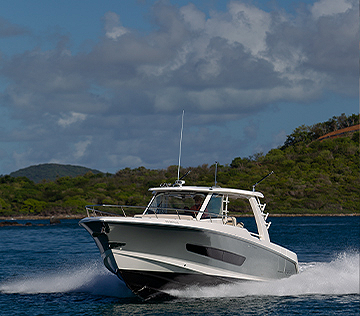
Life Jackets (PFD) for Boating Safety
Personal flotation devices (PFD), aka life jackets, might be the single most important safety item on your boat. And if you take care of them, they will return the favor.
So, who needs a PFD?
In every state, youngsters are required by law to wear life jackets at all times. The age varies from state to state so to find the laws where you live or where you will be vacationing, go to the NASBLA website and click on the interactive map.
Although few regulations require adults to wear life jackets, there are many situations where it is prudent. According to the US Coast Guard’s Recreational Boating Report for 2021, 81% of all deaths while boating were drownings. Of those, 83% of victims weren’t wearing life jackets. Because the vast majority of drownings occur during incidents when a boat is moving, Boston Whaler recommends everyone should wear them while the boat is underway. A few other situations where it is also advisable to wear them are when cruising in rough water, boating alone, when the is cold, traveling fast, or the driver is new to boating.
It’s important to understand the guidelines for PDSs when deciding how to choose a personal flotation device.
- Type 1 PFDs are bulkier but are more buoyant and are suitable for rough, offshore conditions or where rescue may be delayed. They provide better protection to conserve body heat in cold water and will usually orient the wearer face-up if unconscious.
- Type II life jackets are less buoyant and are designed for inshore waters where a quick rescue is likely. Inflatable models are more buoyant than ones with built-in flotation and are more comfortable to wear all day.
- Type III PFDs are designed for on-water activities like water skiing.
- Type IV devices are throwable and are meant to be used in man overboard situations.
- Type V PFDs are special-use devices and are restricted to their labeled use.
The Right Way to Wear a PFD
Having comfortable-to-wear PDF in good condition is a key component to boating safety. Making sure a life jacket fits properly is important to their success. The buckles should be able to be snapped easily and when you grab the shoulder sections and lift, the jacket should not rise as high as the ears. For adults wearing inflatables, they should be worn fairly tight but the wearer should be able to easily slip a fist between their body and the front buckle.
Maximizing the Life of a PFD
If a life jacket has been used or has been exposed to spray, use a mild soap and water to gently clean it. The device must be completely dry before being stored.
Although there isn’t a PFD expiration date on most life jackets, closed-cell foam becomes compressed over time and can lose buoyancy so they should be occasionally tested. Periodically, examine each jacket for damage. Special attention should be shown to straps, buckles, seams and fabric. Inflatable life jackets use a CO2 cartridge that should last at least three years unless they are damaged. Many inflatable jackets have a charge indicator that should register well into the green.
For more info, read about the basics of boating safety.
--
This is for general information purposes only. Your use or reliance on any of the information in this Blog is solely at your own risk. Under no circumstance will we have any liability for any loss or damage of any kind incurred as a result of the use of any of the information provided.
Options and features mentioned subject to change. Please confirm availability of all accessories and equipment with an authorized Boston Whaler Dealer.



